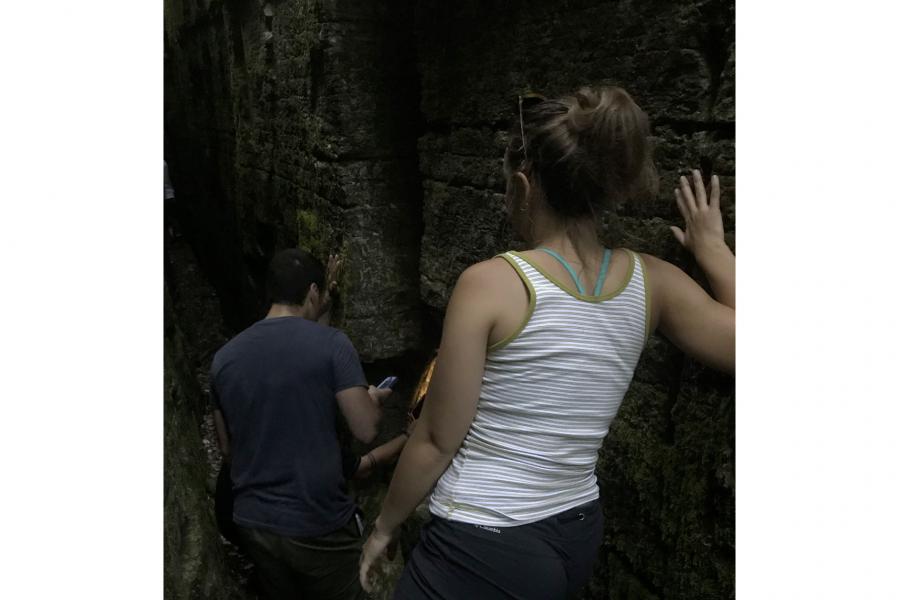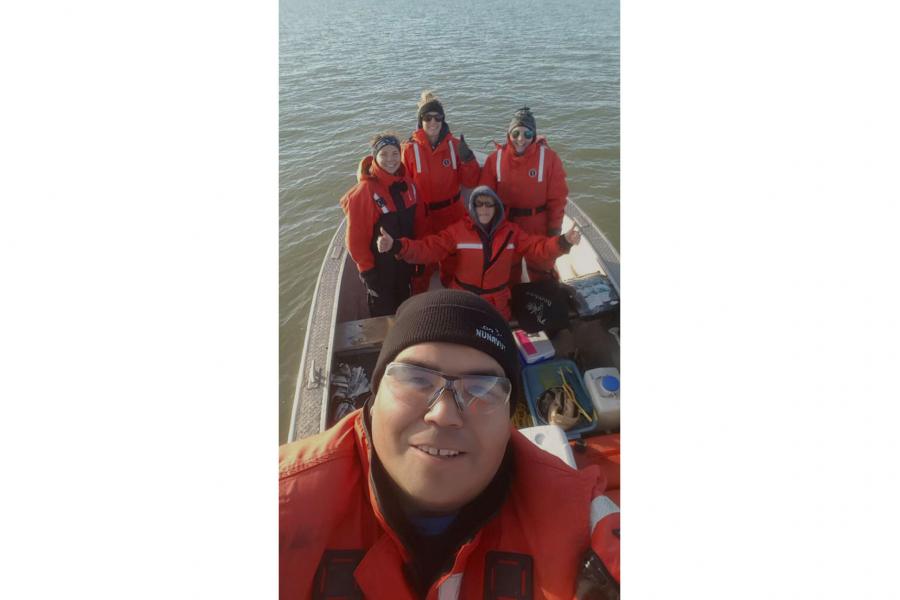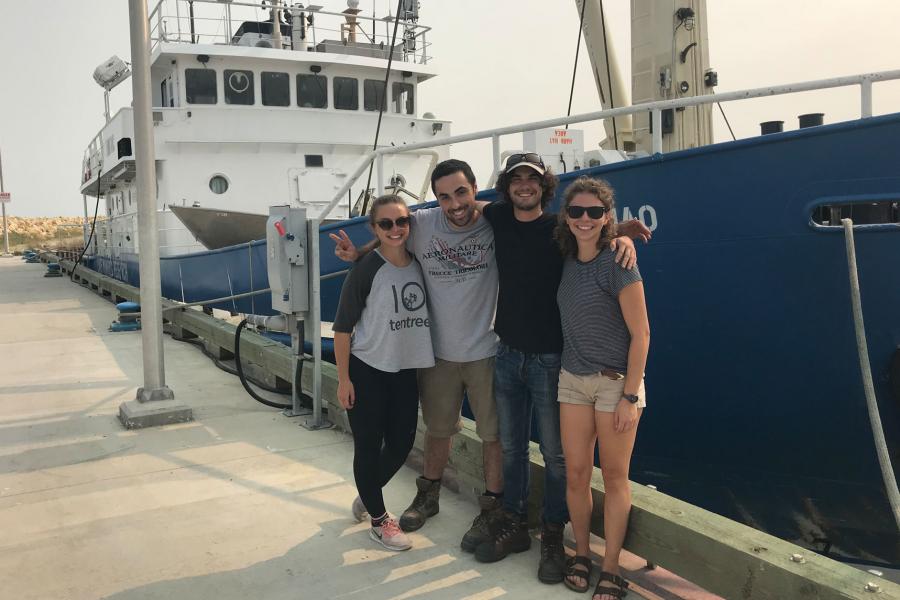Lake Winnipeg Summer 2018
- Manitoba Great Lakes Program
- Rachel Mandryk
It’s 5 a.m. My cabinmate and the science coordinator, Morgan, gets up and leaves. She’ll figure out the plan for the day based on the weather with the captain of the MV Namao, Walter, and then have breakfast. I’ll groggily pull on my workboots and head to the upstairs lab to turn on the gas analyzer box so it can start collecting data when the ship engines start, usually around 6 or 6:30 a.m. If we’re an hour or two from the first station of the day, I’ll sneak in a bit of breakfast, prep bottles and then have a bit of a nap. The ship typically trawls into station, so when the ship slows down, we all know that we’re half an hour away from sampling.
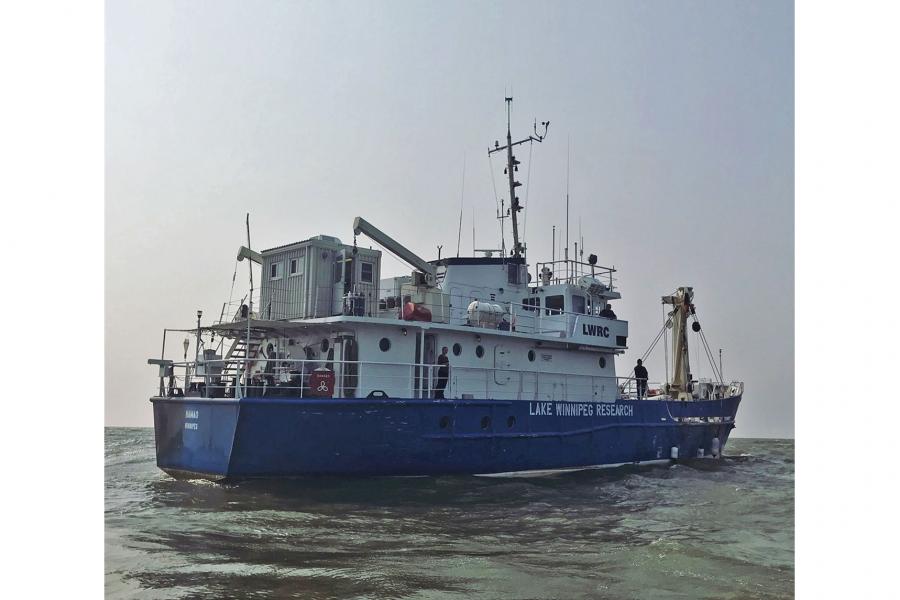
In the meantime, I’ll go to the hold. The lab in the hold is a little smaller than the office space I share with another summer student back at CEOS. The ceiling is about six feet from the ground, and we are very thankful for the small AC unit in the corner. Prepping bottles includes labeling five for dissolved inorganic carbon/total alkalinity, and one of each for algae, whole water (later used to filter for dissolved organic carbon, suspended carbon and nitrogen, and chlorophyll A), methane/nitrous oxide and 13C-DIC. Once the bottles for the day have been labelled, I bring them up in case the lake gets rough and I’m not able to get back to the hold. More than once, I was soaked climbing up from the hold by waves splashing over the bow of the Namao. Sometimes you need an extra shower. More often than not, Lake Winnipeg is happy to provide one, plus it gives the crew a good laugh.

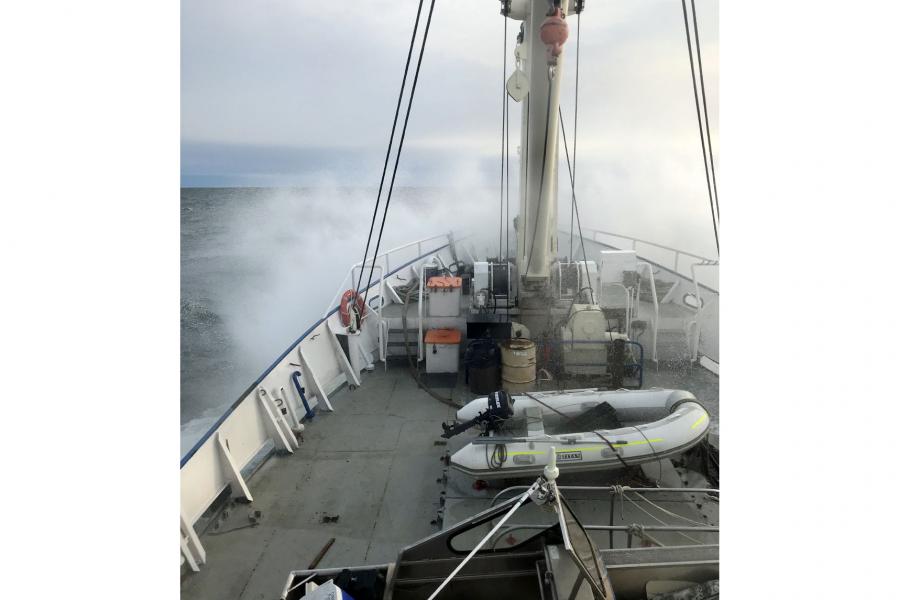
Once the trawl comes up, I help Morgan sort through it. Walleye and sauger go into one bucket, shiners, mooneye, goldeye, perch, bass and everything else goes into another. Larger fish are weighed, measured and thrown back into the lake. After the trawl is done, the rosette is lowered into the water to collect a profile of parameters such as turbidity, fluorescence, temperature and oxygen concentration, as well as water at the surface and bottom. Sometimes we need multiple casts if a large volume of water is needed at both depths. Occasionally, I need water from surface and bottom, so there’s a little bit of back and forth. While I process samples from the first batch, the rosette is being lowered again to get more water. Once the rosette comes back up, I go get more water and get back to preserving the samples on the aft deck. The sample water must be collected and preserved very carefully to avoid air bubbles, but quickly to prevent gases in the water from equilibriating with the atmosphere.
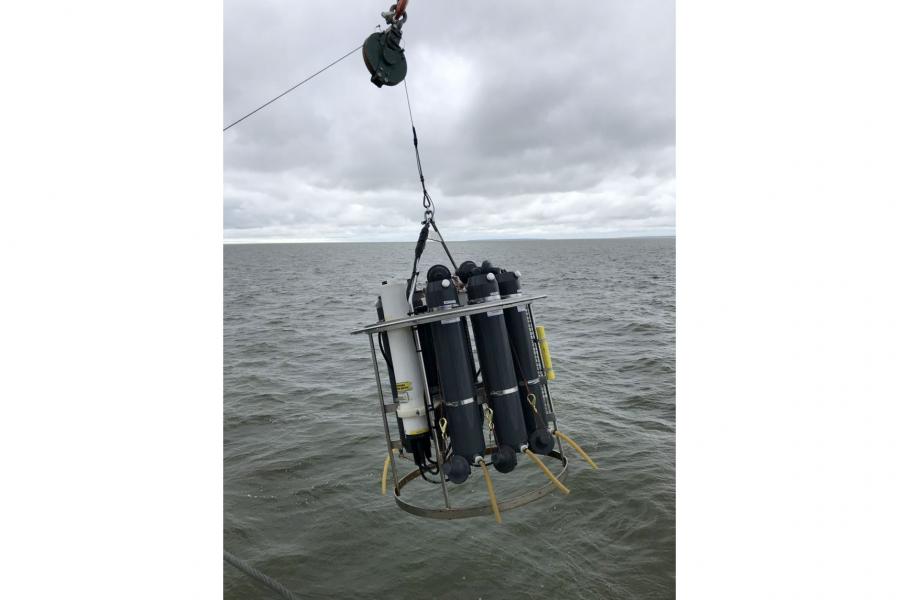

As soon as I’ve preserved the gas samples, it’s time to head back down into the hold for filtering! I’m usually joined in the hold lab by Victor and Jessop, two Environment and Climate Change Canada summer students, who also have filtrations and other lab work to do. If there is enough time between stations, I filter the water in between so that if we are harbouring somewhere that there is opportunity to get off the ship and explore, I can go along with the other scientists and crew. We had the opportunity to explore Victoria Beach, Gull Harbour, George Island and Pine Dock. All were beautiful and it’s always nice to spend some time off ship with the group, stretching our legs a bit. The early mornings and late nights are worth it when we’re able to pack in multiple stations in a day and get as much sampling done in good weather as possible. When we are at anchor and can’t leave the ship when work is done for the day, we usually play cards and have some snacks before I climb back up to the lab to turn off the gas analyzer and clean the incubators for the day. No one stays up too late, because 5 a.m. comes pretty quickly.
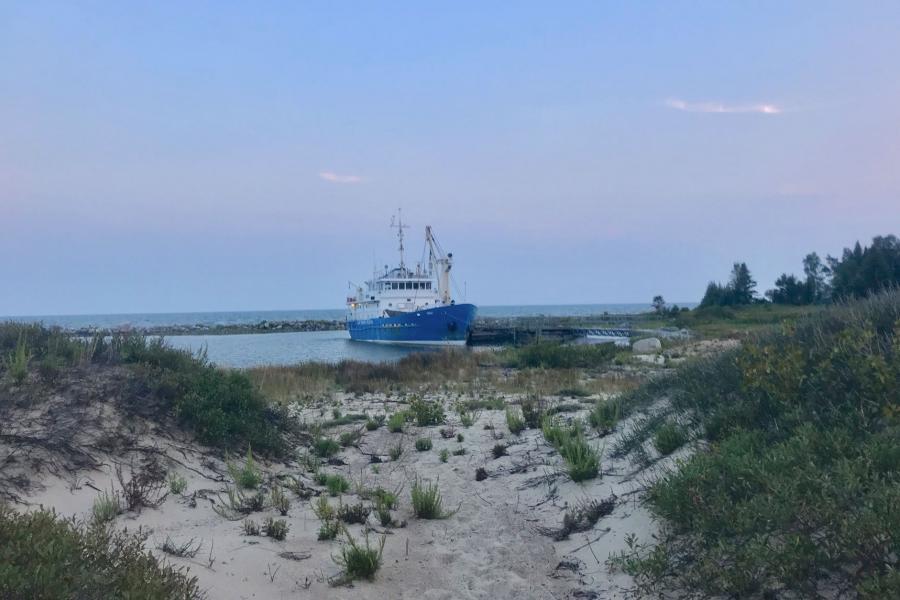

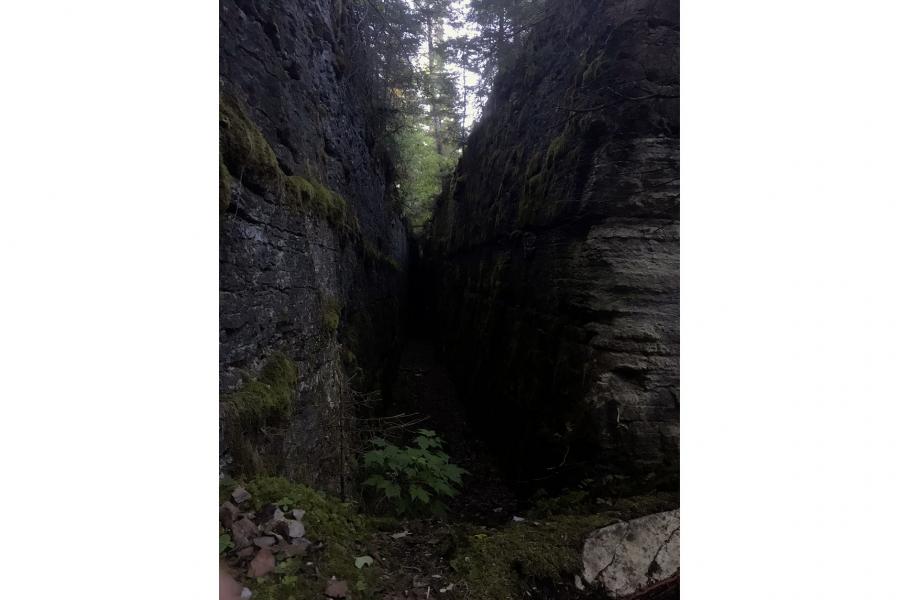
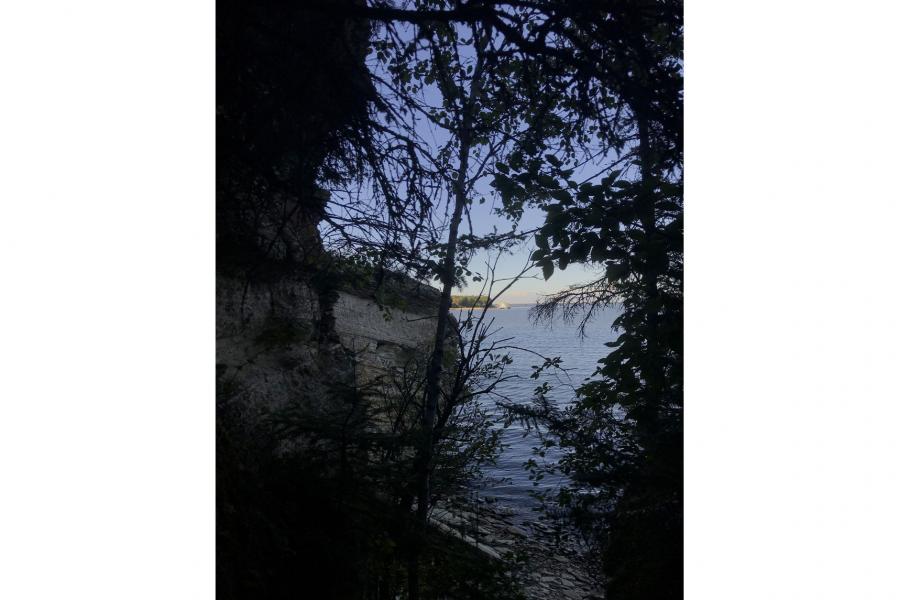
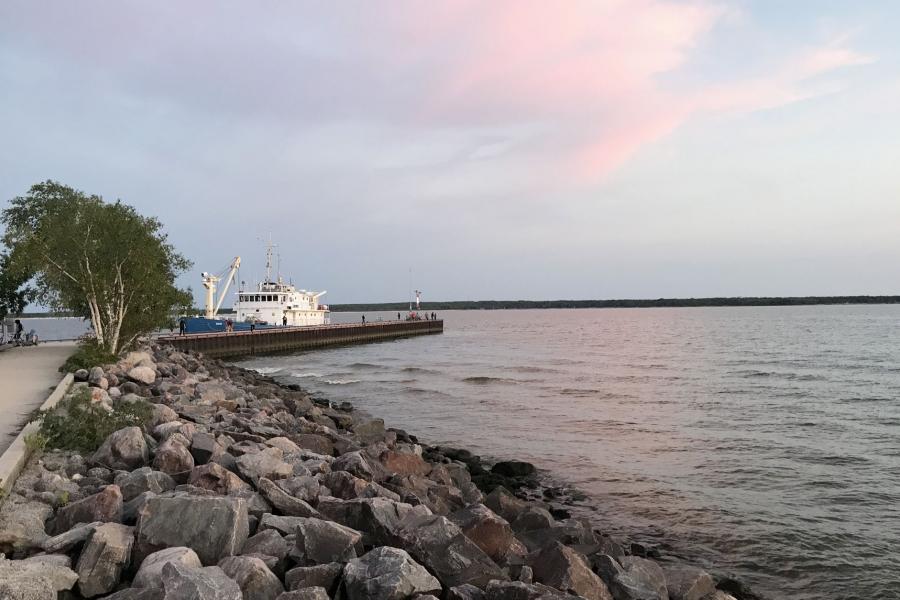
Being in the field inevitably means lots of hiccups. The gas analyzer broke down near Two-Mile Channel, and it was only thanks to the First Engineer onboard the Namao that we were able to get enough life out of it to complete the survey (thank you so much, Andreas). I dropped a lid to one of the bottles in the water and it was swept away. We attempted four times, eventually succeeding, to sample the stations at Warren’s Landing and Two-Mile Channel. I broke a sample bottle so we’re short the surface water methane sample from station W08. The Rosette stopped working, so we had to fill our bottles by hand and using a “Kemmer” type sampler. There were some seasick scientists, long days and lots of coffee. I still haven’t figured out where to stand that I won’t be in the way, and it took longer than I’m willing to admit to figure out that the “Prescott” the First Mate talked about was not a single person, but the Coast Guard base in Prescott, Ontario. But there were many hours in the lab filled with singing, laughing and joking to pass the time, good food waiting for us in the mess, excellent company in the bridge (especially when we came into an area with cell service), lots of opportunities to help each other, to be offered help and to learn about what the other scientists were doing, as well as life onboard a vessel like the Namao.
